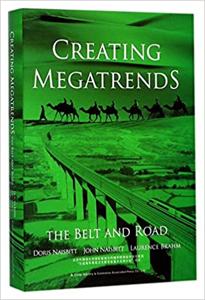
Want to learn the ideas in Megatrends better than ever? Read the world’s #1 book summary of Megatrends by Doris Naisbitt, John Naisbitt here.
Read a brief 1-Page Summary or watch video summaries curated by our expert team. Note: this book guide is not affiliated with or endorsed by the publisher or author, and we always encourage you to purchase and read the full book.
Video Summaries of Megatrends
We’ve scoured the Internet for the very best videos on Megatrends, from high-quality videos summaries to interviews or commentary by Doris Naisbitt, John Naisbitt.
1-Page Summary of Megatrends
“Pillar 1: Emancipation of the Mind”
Modern China has eight pillars that led to its success. The first is the end of doctrinaire thinking, which was started by Deng Xiaoping in 1978 when he took power after the chaos of the Cultural Revolution. He realized that restricting ideas and people’s freedom would only harm society. Instead, he allowed farmers to take charge over their land and sell crops individually, as well as other reforms.
China is a country that has been ruled by authoritarian governments. It’s also had communal property for decades, which led to people not taking chances or innovating. However, there have been some changes in the past few years; reforms were made and unprofitable state-owned enterprises were privatized. China then built a modern financial system and reevaluated Mao Zedong’s legacy (his achievements as well as his mistakes). Now he isn’t seen as infallible anymore but rather more ambiguous.
By the end of the 1990s, China was handling IPOs and M&As. They were in crisis mode and didn’t have time to do polls. Today’s thriving economy is a testament to how far they’ve come from totalitarianism.
“Pillar 2: Balancing Top-Down and Bottom-Up”
The Chinese are not aiming for Western-style democracy. Instead, they’re building a system that has the ability to preserve freedom and order. This new system is built around an orderly hierarchy of leadership and communication from bottom up.
For thousands of years, China had a feudal culture that suppressed any expression of unconventional ideas. Then, in 1978, Deng gave a speech about the need to emancipate minds and seek truth from facts. This led to economic modernization and freedom for farmers to become entrepreneurs. While this was liberating for many Chinese people, it didn’t extend into elections or allowing the public more power over leaders—the government ensured stability through results-based legitimacy instead.
The absence of voting for leaders allows them to plan long term, and not focus on the next election. China is starting to experiment with village elections, but they will be different from Western democracies. The Chinese government pays attention to public opinion surveys about women’s rights and corruption issues.
“Pillar 3: Framing the Forest and Letting the Trees Grow”
Mao wanted everyone to be the same. He was against diversity, but Deng realized that China had to change in order for it to succeed. Westerners were pushing China to become a more Westernized country, but they didn’t understand that China would become its own kind of place and grow at its own pace. The Chinese people have been given more freedom because of this new framework; however, they are still growing as individuals and being creative with their wealth.
Deng recognized the damage caused by Mao’s class struggle theory and the importance of economic emancipation. China’s goal was to double its GDP by 1990 and redouble it by 2000. The Chinese government wanted to “complete modernization” in the first half of the 21st century. To achieve these goals, China had a clear public objective that they were able to meet: their GDP increased from $309 billion in 1980 up to $1.2 trillion in 2000
China plans for the future. It will maintain its power and position, but there may be some political changes in the party system. China’s military strategy is to prepare for defense without territorial expansionism. Economically, it wants to become a world leader in innovation and solve its environmental problems.
The author draws on China’s history of strategic wisdom, which has resulted in the pursuit of economic progress. The government has granted people freedom to find their own means of achieving that objective while experimenting with new policies and structures. They’ve also noticed the need for rural shopping centers and have invested in improving the general shopping experience. Deng established special economic zones that have become metropolises such as Shenzhen, near Hong Kong; it was a fishing village before 1979 but now is home to 10 million people.






